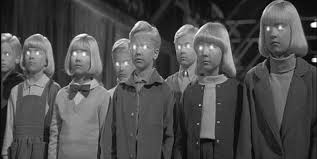The Predator's Precepts
The Predator’s Precepts is a thorough and systematic analysis of how Sangharakshita’s teaching diverges from the Dharma, and of how the community he founded exhibits the characteristics of a cult. The book can be read online or downloaded in eBook or PDF format.
The author gives a brief history of his involvement in Triratna, including his gradual awakening to the seriousness of Sangharakshita’s ethical misconduct. He describes how members of the community are encouraged to “hold the contradiction” between Sangharakshita as sexual predator and Sangharakshita as their revered teacher, and other ways in which his misconduct is belittled.
The author has the advantage of a comprehensive grasp of the early Pali Buddhist texts (Suttas), and so is able to shine the light of traditional Buddhist teaching on what he found within Triratna, which reveals many important points of divergence.
He points out, for example, how
elements in Sangharakshita’s presentation when examined against the Suttas, are seen to foster a subtle form of self-assertion or clinging to views”, and how the ordination system “promotes the desire for and deliberate cultivation of a “higher self” - a notion diametrically opposed to the Buddha’s central metaphor of nibbana as the “blowing out” of the very process of selfing
He also notes how some of Sangharakshita’s teachings
could mislead students into perceiving spiritual progress as a simplistic toggle, undervaluing the gradual, interdependent nature of insight practices”. These observations are backed up by a careful analysis of some of Sangharakshita’s key talks like “Mind: Reactive and Creative” and “A New Society?
One of his conclusions is that much of Sangharakshita’s teaching is founded on personal inference, and as such, is unreliable. This is a very important point - the author does not claim that Sangharakshita’s teaching is always wrong, but that it cannot be relied upon without testing it against experience and the word of the Buddha.
The author looks into whether Sangharakshita has any claim to authority based on his training or lineage, noting that these claims “have been repeatedly challenged by respected teachers across Theravada, Tibetan and Zen traditions”. With the help of many quotes from well-known teachers, the author makes it quite clear that Sangharakshita was never deeply embedded in any living Buddhist tradition, and that his teaching is seen by respected teachers as “a deviant form of Buddhism”.
The bulk of the book is an exploration of the cultish elements in Triratna culture. The author astutely points out that cult-like dynamics can arise “not necessarily through deliberate malice, but often as unintended consequences”. Nevertheless, these cult-like qualities are important, because their existence
exacerbates the ongoing harms being done to those who are unable to hold the contradiction of having a teacher who was a sexual and psychological abuser when he is revered on a regular basis by the more zealous members of the community
Here the author draws on contemporary scholarship on cult behaviour, establishing a framework to evaluate the author’s own observations of how Triratna operates, and also various key Triratna talks and texts. Chief among them are the Seven Papers, which are “considered definitive texts within Triratna for understanding its distinctive approach to Buddhism”. After a thorough analysis of the papers, the author concludes that they score highly against several of the points in the analytical framework of “cultishness”, particularly “Charismatic Leader”, “Ideological Manipulation”, and “All-or-nothing Loyalty”.
The author concludes with a series of recommendations for how Triratna might go about rectifying the problems he has identified.
This publication is a thorough, measured, and insightful look at Triratna, and I strongly recommend anyone with an interest in Triratna reads it in full.




